The Power of Watt's Law (Applications - Exercises)
Electric service billing depends on the consumption of the electric powerTherefore, it is very useful to understand what it is, how it is measured and how to reduce consumption by applying Watt's law. In addition, it is a basic variable for the study of electrical networks, and in the design of electrical devices.
The scientist Watt established a law, named after him, that allows us to calculate this important variable. Next, the study of this law and its applications.
BASIC CONCEPTS:
- Electrical circuit: Interconnection of electrical elements through which an electrical current can flow.
- Electric current: Electric charge flow per unit time through a conductive material. It is measured in amps (A).
- Electric tension: Also known as electrical voltage or potential difference. It is the energy required to move an electrical charge through an element. It is measured in volts (V).
- Energy: Ability to do work. It is measured in joule (J), or in watt-hours (Wh).
- Electric power: amount of energy that an element delivers or absorbs in a given time. Electrical power is measured in watts or watts, it is symbolized by the letter W.
Maybe you might be interested in: Ohm's Law and its secrets, exercises and what it establishes
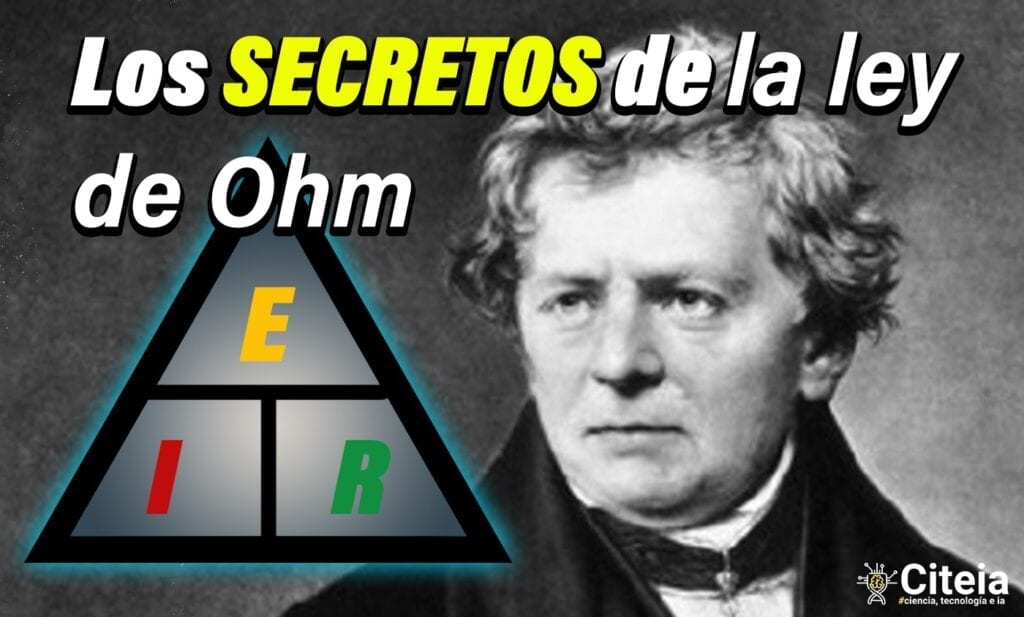
Watt's Law
Watt's Law states that "The electrical power that a device consumes or delivers is determined by the voltage and current flowing through the device."
The electrical power of a device, according to Watt's Law, is given by the expression:
P = V x I
Electrical power is measured in watts (W). The “power triangle” in Figure 1 is often used to determine power, voltage, or electrical current.
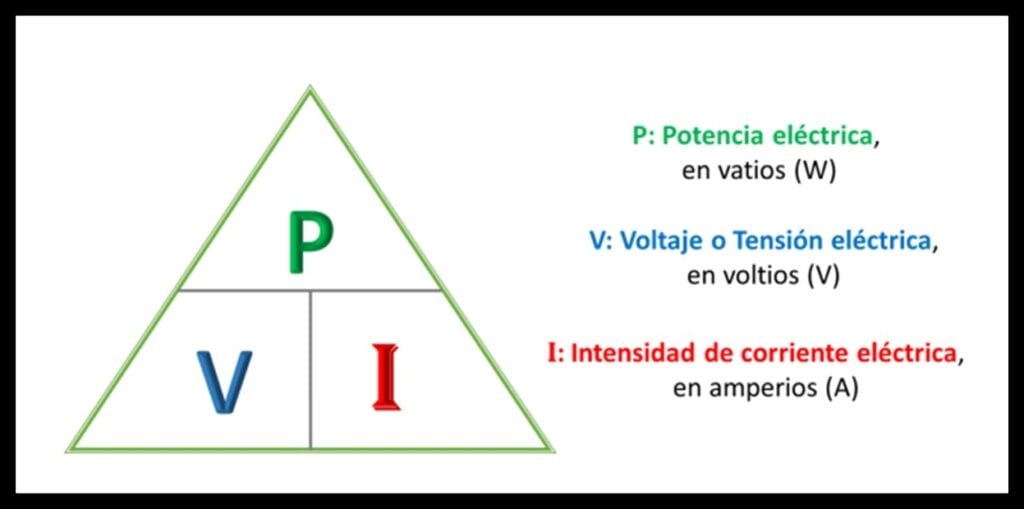
In figure 2 the formulas contained in the power triangle are shown.
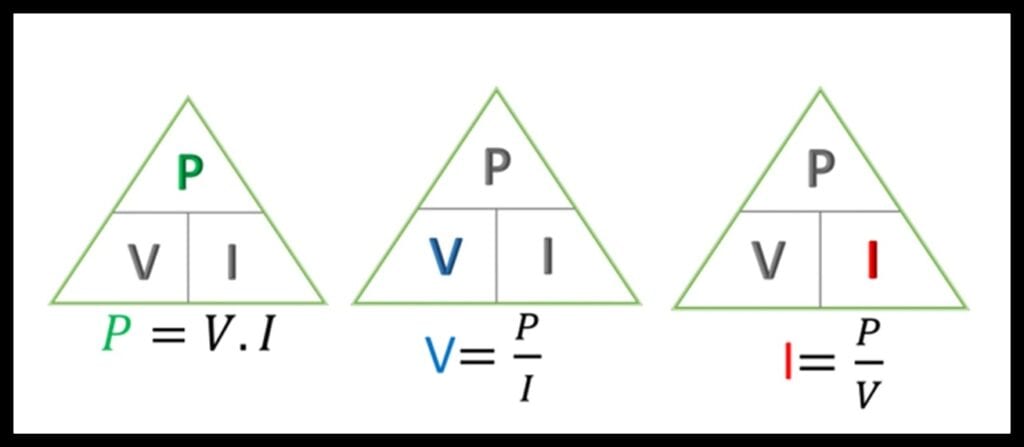
James Watt (Greenok, Scotland, 1736-1819)
He was a mechanical engineer, inventor, and chemist. In 1775 he manufactured steam engines, thanks to his contribution to the development of these machines, industrial development began. He is the creator of the rotary engine, double effect engine, steam pressure indicator instrument, among others.
In the International system of units, the unit for power is the “watt” (Watt, W) in honor of this pioneer.
Calculation of energy consumption and electric service billing using Watt's law
Starting from the fact that electrical power is the amount of energy that an element delivers or absorbs in a given time, the energy is given by the formula in figure 3.
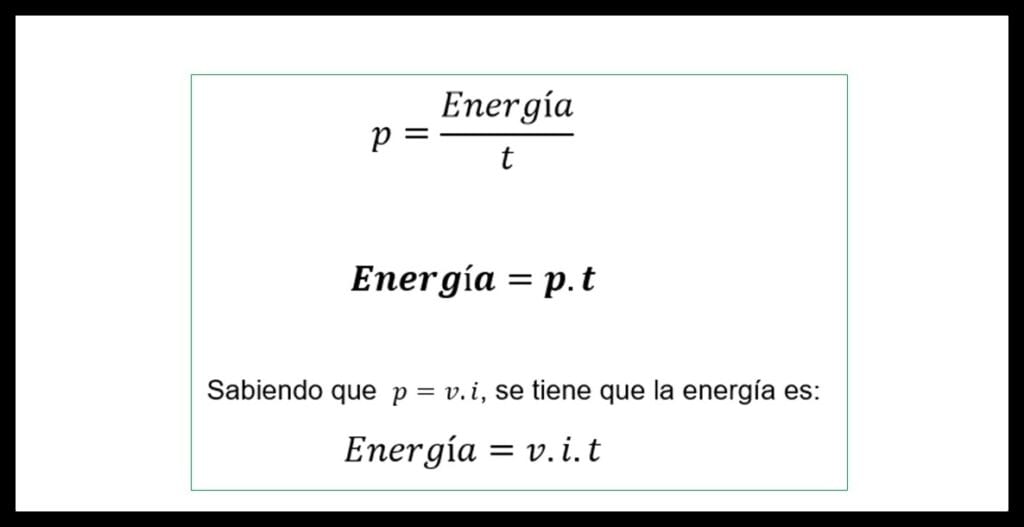
Electrical energy is usually measured in the unit Wh, although it can also be measured in joule (1 J = 1 Ws), or in horsepower (hp). To make the different measurements we recommend you read our article on electrical measuring instruments.
1 Exercise applying Watt's law
For the element in Figure 4, calculate:
- Absorbed power
- Energy absorbed for 60 seconds
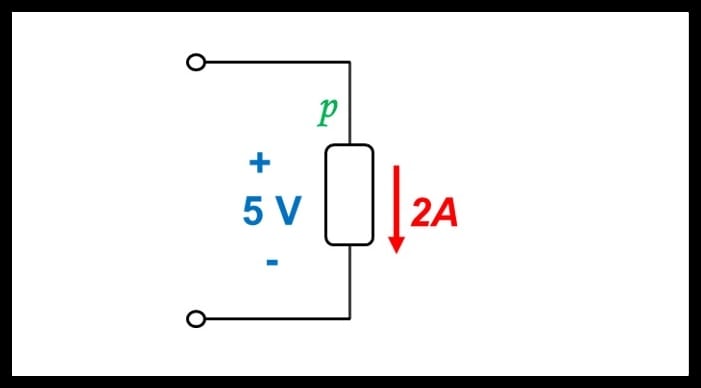
Solution Exercise 1
A.- The electrical power absorbed by the element is determined according to figure 5.
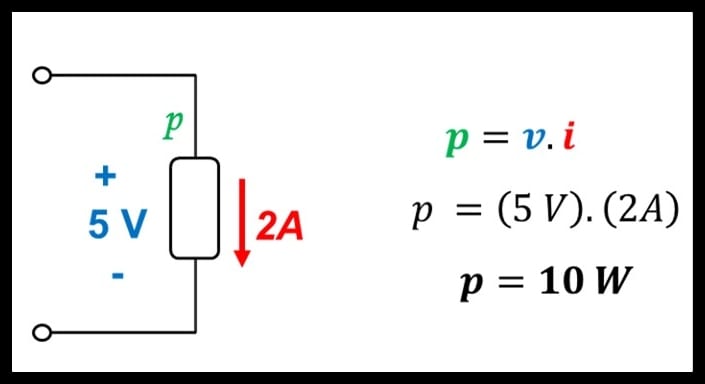
B.- Absorbed energy

Result:
p = 10 W; Energy = 600 J
Consumption of electrical energy:
Electricity service providers establish rates according to electricity consumption- Electric energy consumption depends on the power consumed per hour. It is measured in kilowatt-hours (kWh), or horsepower (hp).
Electricity consumption = Energy = pt
2 Exercise applying Watt's law
For a clock in Figure 8, a 3 V lithium battery is purchased. The battery has a stored energy of 6.000 joule from the factory. Knowing that the clock consumes an electrical current of 0.0001 A, in how many days will it take to replace the battery?
Solution Exercise 2
The electrical power consumed by the calculator is determined using Watt's Law:

If the energy consumed by the calculator is given by the relation Energy = pt, solving the time "t", and substituting the values of energy and electrical power, the battery life time is obtained. See figure 6
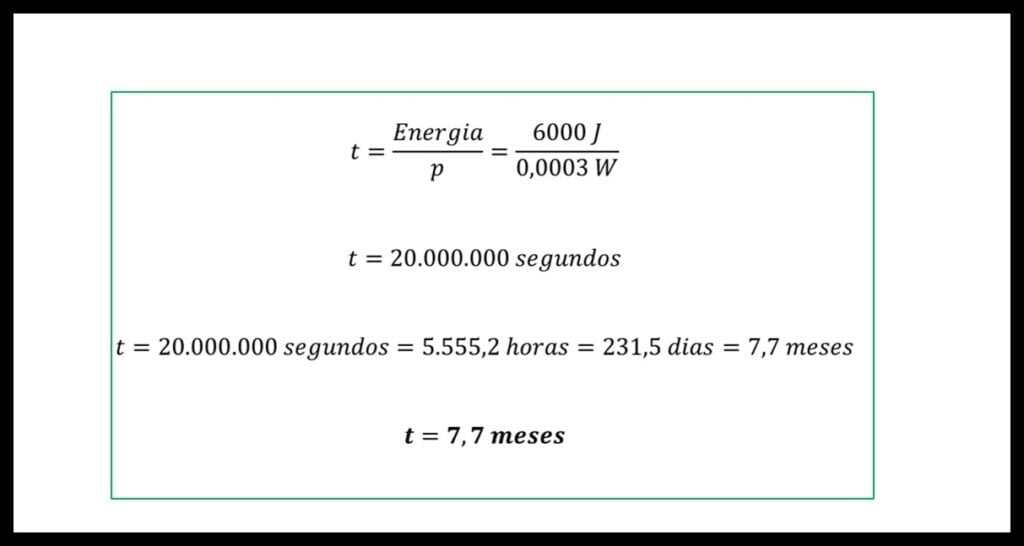
The battery has the capacity to keep the calculator on for 20.000.000 seconds, which is equivalent to 7,7 months.
Result:
The clock battery should be replaced after 7 months.
3 Exercise applying Watt's law
It is required to know the estimate of monthly expenses in the electricity service for a local, knowing that the rate for electricity consumption is 0,5 $ / kWh. Figure 7 shows the devices that consume electricity within the premises:
- 30 W phone charger, operating 4 hours a day
- Desktop computer, 120 W, operating 8 hours a day
- Incandescent bulb, 60 W, operating 8 hours a day
- Desk lamp, 30 W, operates 2 hours a day
- Laptop computer, 60 W, operating 2 hours a day
- TV, 20 W, operating 8 hours a day

Solution:
To determine the electricity consumption, the relation Energy Consumption = pt is used. Thus, for the phone charger, which consumes 30 W and is used 4 hours a day, it will consume 120 Wh or 0.120Kwh per day, as shown in figure 8.
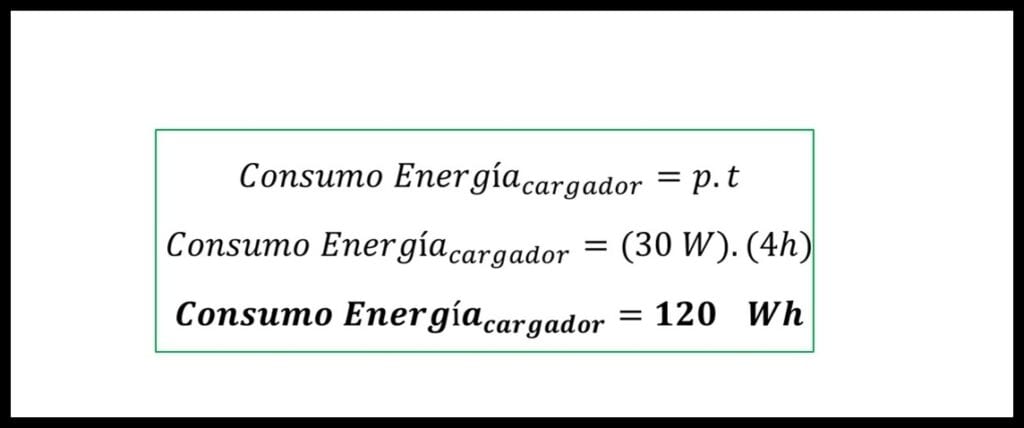
Table 1 shows the calculation of the electrical consumption of the local devices. 1.900 Wh or 1.9kWh are consumed daily.
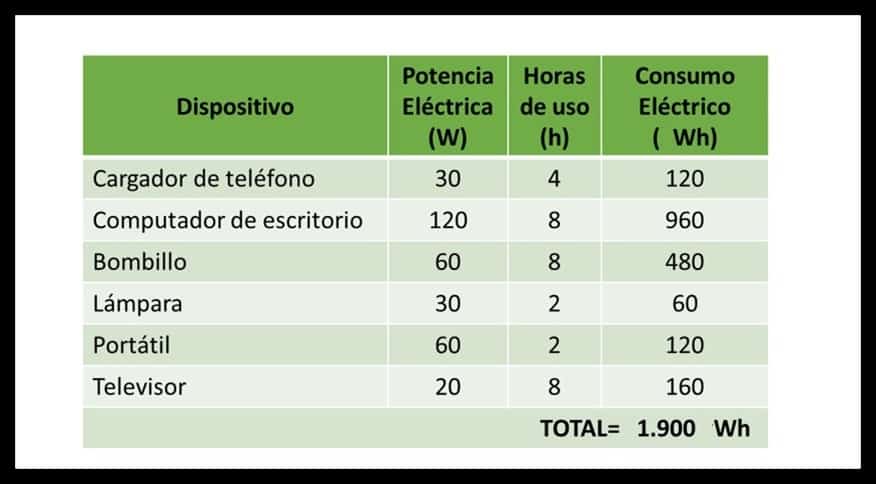

With a rate of 0,5 $ / kWh, the electric service will cost:

Result:
The cost of electric service in the premises is $ 28,5 per month, for a consumption of 57 kWh per month.
Passive sign convention:
An element can absorb or supply energy. When the electrical power of an element has a positive sign, the element is absorbing energy. If the electrical power is negative, the element is supplying electrical energy. See figure 9
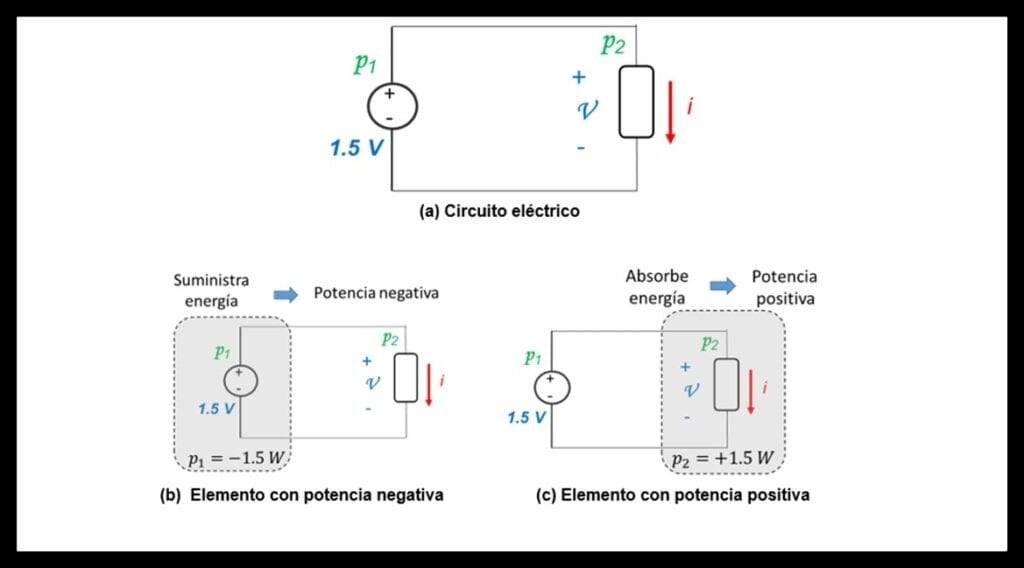
It was established as a "passive sign convention" that electrical power:
- It is positive if the current enters through the positive terminal of the voltage in the element.
- It is negative if the current enters through the negative terminal. See figure 10

Exercise 4 applying Watt's law
For the elements shown in Figure 11, calculate the electrical power using the positive sign convention and indicate whether the element supplies or absorbs energy:

Solution:
Figure 12 shows the calculation of the electrical power in each device.

Result
TO. (Profit year A) When the current enters through the positive terminal, the power is positive:
p = 20W, the element absorbs energy.
B. (Profit for exercise B) When the current enters through the positive terminal, the power is positive:
p = - 6 W, the element supplies power.
Conclusions for Watt's Law:
Electrical power, measured in watts (W), indicates how fast electrical energy can be transformed.
Watt's Law provides the equation for the calculation of electrical power in electrical systems, establishing the direct relationship between power, voltage and electrical current: p = vi
The study of electrical power is useful to determine the performance of the equipment, in the design of the same to reduce electricity consumption, for the collection of electricity service, among other applications.
When a device consumes energy the electrical power is positive, if it supplies energy the power is negative. For the analysis of power in electrical circuits, the positive sign convention is usually used, which indicates that the power in an element is positive if the electric current enters through the positive terminal.
Also on our website you can find: Kirchhoff's law, what it establishes and how to apply it
